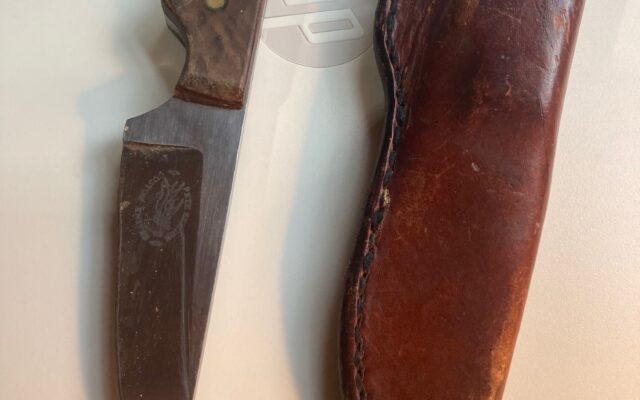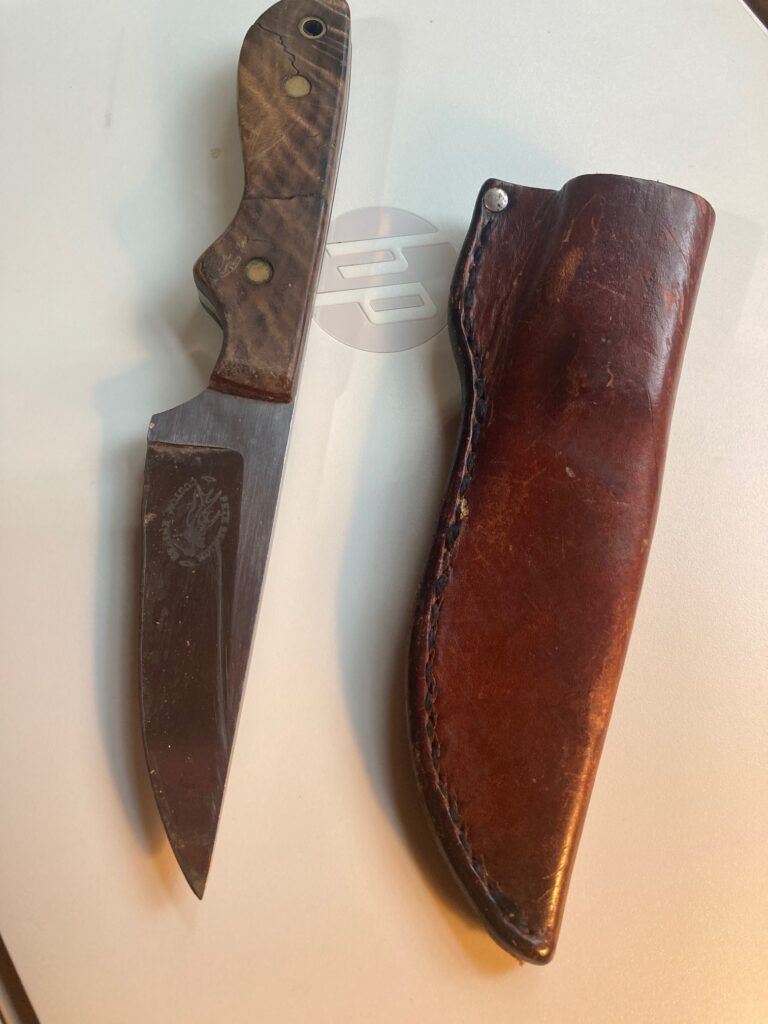
The best knives for Maine hunters
By V. Paul Reynolds
Over the years, an assortment of different hunting knives have wound up in my hunting day pack. Some held an edge well, and some did not.
Without a doubt, the litmus test I have encountered with a hunting knife is when the knife is used to skin an elk during the dry dressing method. Also known as the gutless method, this is when a hunter removes the hide and quarters of the elk without opening the body cavity.
Nothing will dull a knife faster than the coarse hairs of an elk hide. A moose hide would present the same cutting challenge.

CUSTOM KNIFE — The author’s hunting knife has seen a lot of use. It is a custom knife made by the late Pete Semich, who was known for his craftsmanship. Semich knives can be found today on the secondary market.
After some knife-dulling frustration with my first dry-dressed elk, I was better prepared during my second elk hunt.
My day pack included not one, but two conventional hunting knives, a hand sharpener and a razor-sharp utility knife with a box of extra blades.
Industry experts and knife reviewers consistently recommend these knives as top performers:
Benchmade Steep Country and Knives of Alaska Bush Camp/Cub Combo – both are fixed blade knives. The Outdoor Edge RazorPro or Havalon Talon/Havalon Piranta Edge are lightweight knives known for their replaceable, surgically sharp blades.
All of these knives are designed for big game, are tough for quartering and nimble enough for skinning.
As far as costs go, the first choice, the Benchmade hunting knife, retails in the $200.00 range. The second choice, the Alaskan Bush Knife, retails for about $150.00. The Outdoor Edge or Havalon Talon, which were the only brands to get a double mention from reviewers, are less expensive and are in the $50.00 range.
To get a local perspective, I asked some Maine hunting guides and hunters who depend upon a skinning or quartering knife more than most. Warden Kale O’Leary uses a havalon, and wild chef and outdoorsman Denny Corriveau uses an Outdoor Edge. Maine guide and outfitter John Floyd uses a Benchmade Steep knife.
Other experienced Maine hunters use brands not listed above. Big Wood Bucks hunter Hal Blood and North Maine Woods director Bill Greaves use a Buck knife. Aroostook hunter Mike Maynard likes a Boker – a German knife handed down by his father. Guide Matt LaRoche uses a Schrade 4-inch blade folding knife, Aroostook county moose guide Dave Hentosh uses a Case knife with a 5-inch blade and Vermont outdoorsman Gary Moore prefers a knife made by Vermont’s Kingdom Knives.
Whatever the knife, getting a razor edge is the name of the game. Fishing guide Randy Spencer always finishes off his blade work with a leather strop, and swears by it. Moose biologist and avid deer hunter Lee Kantar likes a knife with a drop point blade, which is a blade design that is excellent when removing a hide or caping. The design reduces the chance of going astray and accidentally puncturing the body cavity when dry dressing.